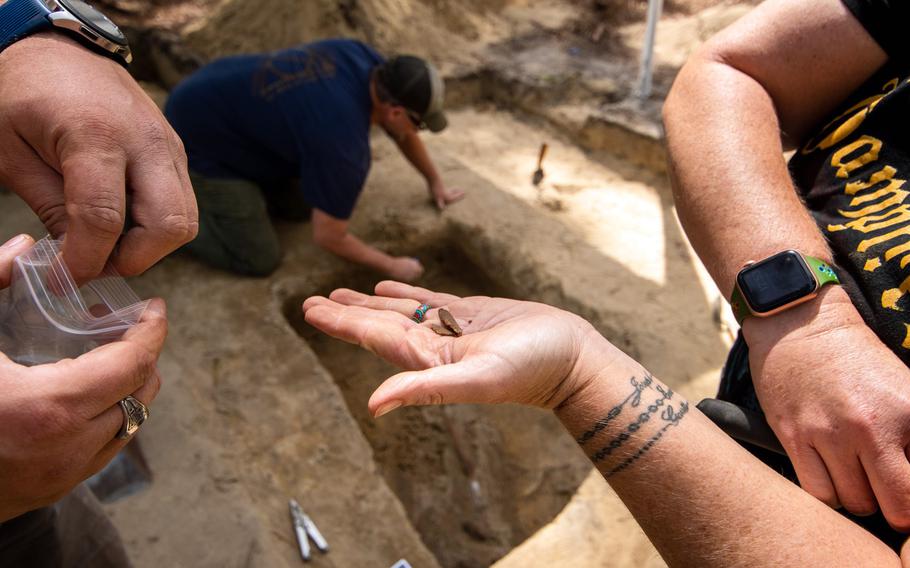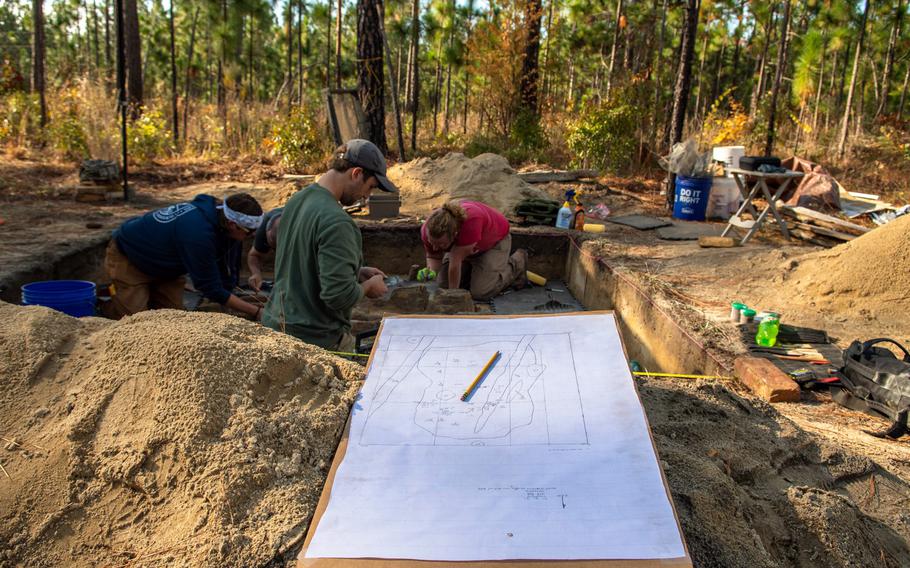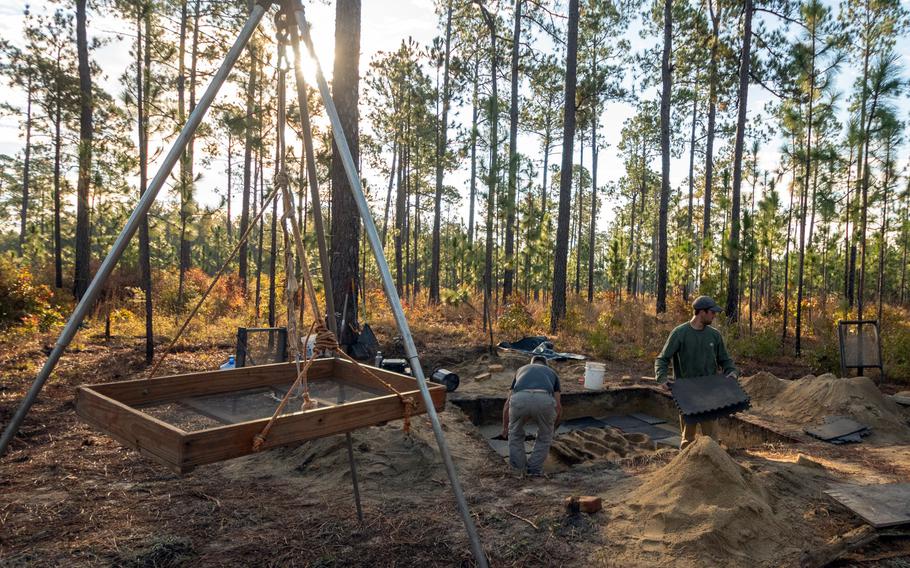
Over eight weeks starting in September, archaeologists and anthropologists unearthed the remains of 14 individuals who died in the Battle of Camden during the Revolutionary War. (Sarah Nell Blackwell)
The remains of more than a dozen soldiers who died in one of America’s most stinging defeats of the Revolutionary War were discovered over the fall on a South Carolina battlefield, according to the South Carolina Battlefield Trust.
Over eight weeks starting in September, more than 12 archaeologists from the University of South Carolina and three biological anthropologists with the Richland County Coroner’s Office unearthed the remains of 14 individuals who died in the Battle of Camden, sometimes called Camden Courthouse, trust spokeswoman Jennifer Howard told Stars and Stripes by email Wednesday.
Based on preliminary examinations, the team believes that 12 sets of remains are those of Continental soldiers from either Maryland or Delaware, according to the statement. One is likely a North Carolina Loyalist and one served with the British 71st Regiment of Foot, Fraser’s Highlanders.
Some of the remains were discovered less than six inches below the surface in seven separate spots across the battlefield, and were carefully excavated and removed, according to a Nov. 11 press release from the trust.

Over eight weeks starting in September, archaeologists and anthropologists unearthed the remains of 14 individuals who died in the Battle of Camden during the Revolutionary War. (Sarah Nell Blackwell)
“This discovery is particularly significant to the history of our state and nation,” Steven Smith of the South Carolina Institute of Archaeology and Anthropology said in the release.
“This is a rare opportunity to examine and analyze a large sample of Revolutionary War soldiers to get information about their health and diet, age, gender, and compare the forensic data to the historic record,” said Smith, who served as principal investigator for the project.
Camden was a vital transportation and communications hub that was targeted for capture by the Americans. As many as 900 Americans were killed or wounded and another 1,000 captured at Camden on Aug. 16, 1780, according to the revolutionarywar.us website. The British forces suffered 68 killed and 245 wounded.
The larger American force of 3,700 commanded by Maj. Gen. Horatio Gates, the victor three years earlier at Saratoga, N.Y., consisted of inexperienced militia, and a core of about 1,200 Continental soldiers from Delaware and Maryland.
They faced a force of 2,230 British regulars, Loyalist units such as the British Legion under Lt. Col. Banastre Tarleton and loyal militia, all commanded by Lt. Gen. Charles, Lord Cornwallis.
On the field, Cornwallis’ most experienced fighters faced Gates’ Virginia militia, who gave way when confronted with a bayonet charge. The Continentals held their own until they were overwhelmed. Many were captured; others fled into the surrounding forests.
Among the battle casualties was Maj. Gen. Johann de Kalb, commander of the Continentals, a German-born officer of the French army who volunteered his services to America early in the war.
Gates fled the field and never again held command. He was replaced in the South by Maj. Gen. Nathanael Greene.

Over eight weeks starting in September, archaeologists and anthropologists unearthed the remains of 14 individuals who died in the Battle of Camden during the Revolutionary War. (Sarah Nell Blackwell)
The battlefield is today held by the Katawba Valley Land Trust, according to the Post and Courier newspaper on Nov. 11. The remains, once studied, will be returned there, according to the news release.
“All soldiers, including the British soldier, will be placed in a coffin, sealed in a vault, and reinterred on the location on the battlefield from which they were excavated,” Howard said in her email. “Additionally, we have engaged the British government and military and those talks are ongoing.”
Planning is underway by the South Carolina Battlefield Preservation Trust and Camden area partners for reinterment ceremonies April 20-22, 2023, according to the release.
“Our intent is to lay them to rest with the respect and honor they earned more than two centuries ago,” Doug Bostick, South Carolina Battleground Preservation Trust CEO, said in the statement.